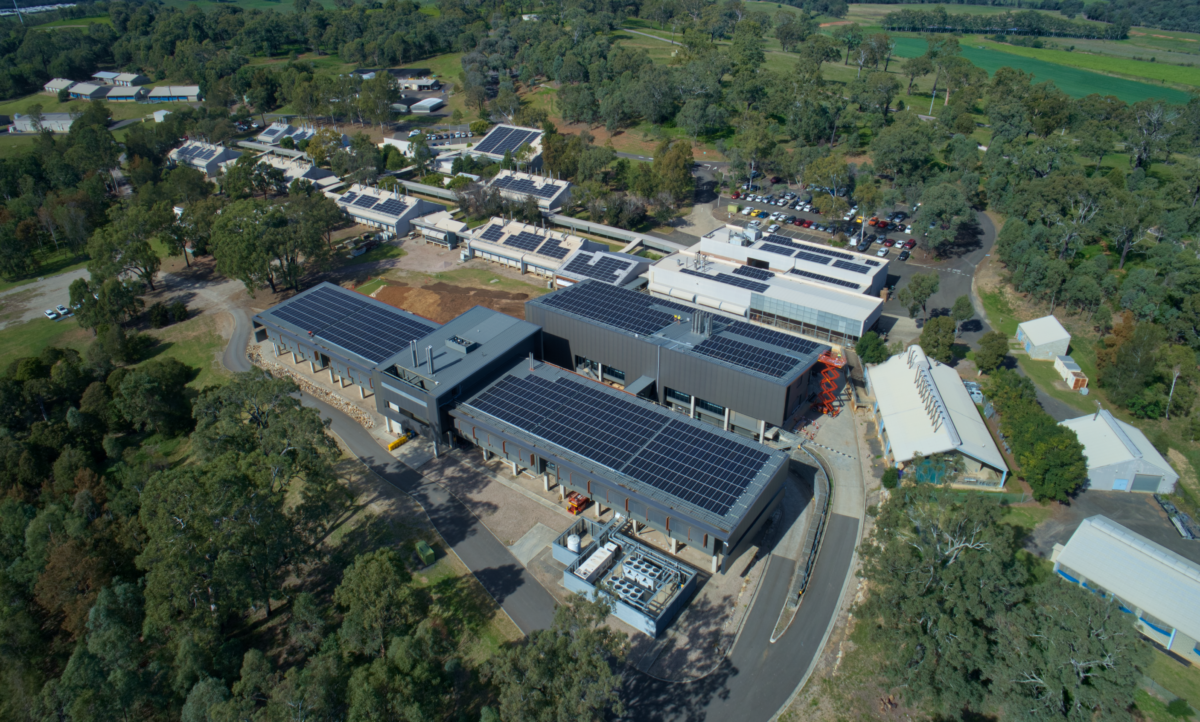The New South Wales (NSW) government, perhaps inspired by a recent 60s throwback party, have completed a rather extensive program of solar PV installations across three aquatic and agricultural research and development facilities in regional NSW and greater Sydney. “This is the dawning of the age of Aquarius…” sang 5th Dimension in 1969, “let the sunshine in.”
The rooftop solar PV installations amount to some 2,250 solar panels across the three sites, managed by energy services business Verdia.
The NSW Department of Planning, Industry & Environment sites include:
- The Elizabeth Macarthur Agricultural Institute in Menangle – the site of the original land granted to agricultural pioneers John and Elizabeth Macarthur in 1805.
- The Tamworth Agricultural Institute – providing research and development activities across crop breeding, pathology and grain quality programs.
- The Port Stephens Fisheries Institute at Taylors Beach – headquarters for marine ecosystems and aquaculture research in NSW.
The three rooftop installations reach a combined 850kW generating an estimated 1,240 MWh of unfettered solar energy. The NSW Government estimates its current electricity bill of approximately $940,000 a year across the three sites will fall by 22%, or $210,000 a year, with the solar installation.
Verdia CEO Paul Peters said on-site solar generation was continuing to be an effective way for businesses and government to reduce their energy costs. “The cost of electricity generated from solar panels installed behind the meter is cheaper than electricity sourced from the grid,” Peters said. “I can’t see that changing in the foreseeable future. And now governments are looking at solar PV to reduce their energy costs, as well as their carbon footprint.
Auspiciously, not only is the NSW government saving money on its electricity bill, but the installations themselves are not coming out of the budget. Westpac’s Energy Efficiency Finance Program is funding the program. “By funding this investment through Westpac’s Energy Efficiency Program,” noted Peters, “the NSW Government can release the benefits of reduced energy costs, without any impact on its budget. It takes the risk out of these investments.”
All three facilities are on the front-lines of investigative, developmental and pathology prevention research. The Elizabeth Macarthur Agricultural Institute is utilising its 1,500 solar panels to help empower its task as the first life of defence in early detection of emerging or exotic farm and animal diseases. The importance of such research, considering the drought-related stress NSW agriculture is already under, cannot be stressed enough.
Not dissimilarly, the Tamworth Agricultural Institute works to aid agricultural industries and rural communities remain economically viable and sustainable. The facility’s adoption of solar PV is an example of leading by example.
Finally, Port Stephens Fisheries Institute’s 500-panel installation is helping to power research into aquaculture and marine ecosystems in NSW, including “fish-friendly” hydropower generation research projects.
These solar installations will no doubt take a great strain off these facilities which seek to take a great strain off our agricultural and aquacultural ecosystems.
“Let the sunshine, let the shine in, the sunshine in.”
This content is protected by copyright and may not be reused. If you want to cooperate with us and would like to reuse some of our content, please contact: editors@pv-magazine.com.









By submitting this form you agree to pv magazine using your data for the purposes of publishing your comment.
Your personal data will only be disclosed or otherwise transmitted to third parties for the purposes of spam filtering or if this is necessary for technical maintenance of the website. Any other transfer to third parties will not take place unless this is justified on the basis of applicable data protection regulations or if pv magazine is legally obliged to do so.
You may revoke this consent at any time with effect for the future, in which case your personal data will be deleted immediately. Otherwise, your data will be deleted if pv magazine has processed your request or the purpose of data storage is fulfilled.
Further information on data privacy can be found in our Data Protection Policy.